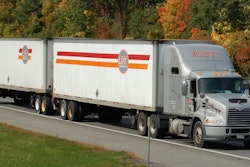
The latest special law enforcement motor vehicle safety effort is scheduled for the second week of July, and it ought to be an especially good time to pay close attention to speed limit signs.
The Commercial Vehicle Safety Alliance recently announced July 9-15 is this year’s Operation Safe Driver Week. Throughout that week, law enforcement officers in the U.S., Canada, and Mexico will be on the lookout for commercial motor vehicle drivers and passenger vehicle drivers engaging in unsafe driving behaviors. Those exhibiting unsafe driving behaviors will be pulled over and given a warning and/or issued a ticket/citation by law enforcement, according to a statement from CVSA.
Each year, Operation Safe Driver Week focuses on a specific unsafe driving behavior to call attention to the dangers of that behavior. This year, the focus will be on speeding. CVSA has continued to focus on speeding because it remains a persistent problem on our roadways. Speeding increases the frequency and severity of crashes, and unsafe speeds are a well-documented factor in fatalities and injuries.
During last year's Safe Driver Week, officers in Canada and the U.S. pulled over more than 35,000 commercial motor vehicles and passenger vehicles and issued 26,164 warnings to drivers engaging in unsafe driving behaviors.
Speeding, which also was the focus of last year’s Operation Safe Driver Week, was the top violation for both types of drivers. Officers issued 8,586 citations and 7,299 warnings for speeding/violating basic speed law/driving too fast for conditions. According to CVSA, that amounts to 2,577 warnings to commercial motor vehicle drivers and 4,722 to passenger vehicle drivers. Citations were given to 1,490 commercial motor vehicle drivers and 7,096 passenger vehicle drivers.
The CVSA said this weeklong driver safety traffic enforcement and awareness campaign aims to identify unsafe drivers, deter dangerous driving behaviors and prompt positive driving habits through officer interactions with drivers. Data shows that traffic stops and interactions with law enforcement help reduce problematic driving behaviors.
Examples of unsafe driver behaviors are speeding; improper lane changes, passing or turns; driving while under the influence of drugs or alcohol; using a handheld device; failure to wear a seat belt, etc.
 CVSA
CVSA











